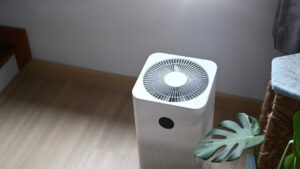
Stale indoor air and heating systems can boost the number of allergy-inducing dust mites, pet dander, and mold spores that circulate in your space.
Most things that cause the problems can be hard to detect because they don’t have a scent. The symptoms may easily be mistaken for something else without anything to alert you of the problem.
Respiratory issues like asthma flare-ups, fatigue and sleepiness, and even digestive issues can all occur at high levels in the winter because there is a limited flow of fresh air from outside.
Trying to improve air quality can help relieve the symptoms. It’s impossible to get rid of all of them, but you can improve conditions with a few simple steps.
Keep It Clean: A clean house can reduce dust, mold, and animal dander. Vacuum carpets and area rugs at least once per week. Regularly clean bedding, drapes, and other items that can attract allergens. Clean clutter because it traps and holds dust.
Be Careful with Plants: Plants can be great to have indoors if you take care of them properly. They can also be a nightmare for people with allergies and respiratory issues. Plants can collect and grow mold, which can pose trouble.
Change Air Filters: If you have forced-air heating systems, change the filters regularly to ensure allergens and irritants get trapped instead of recirculating in your home.
Investing in an air purifier can also help with symptoms, particularly if you can’t control the source of the problem – like having a pet.
Let Fresh Air In: Even when it’s cold out, consider occasionally opening the windows to allow some fresh air in.